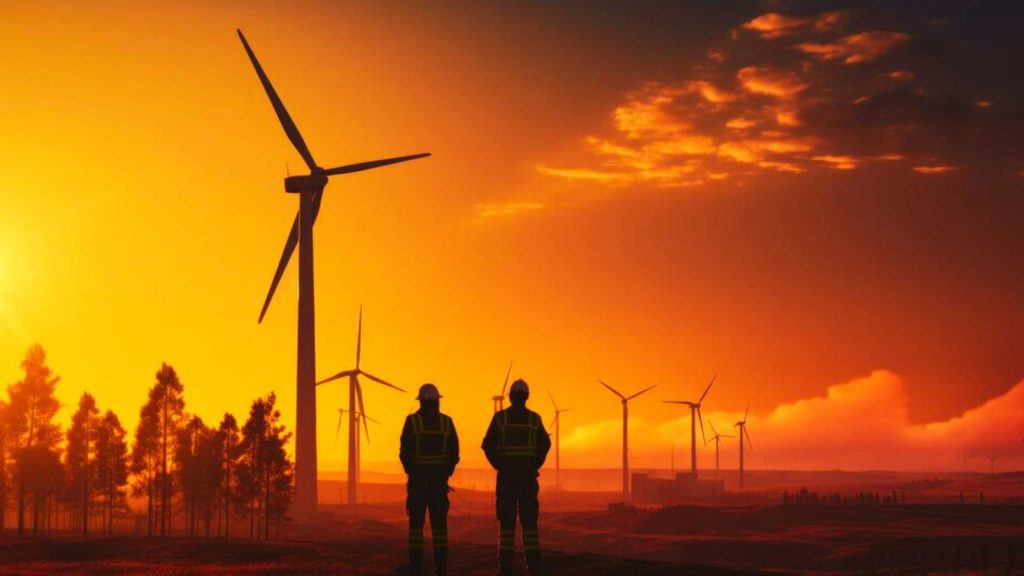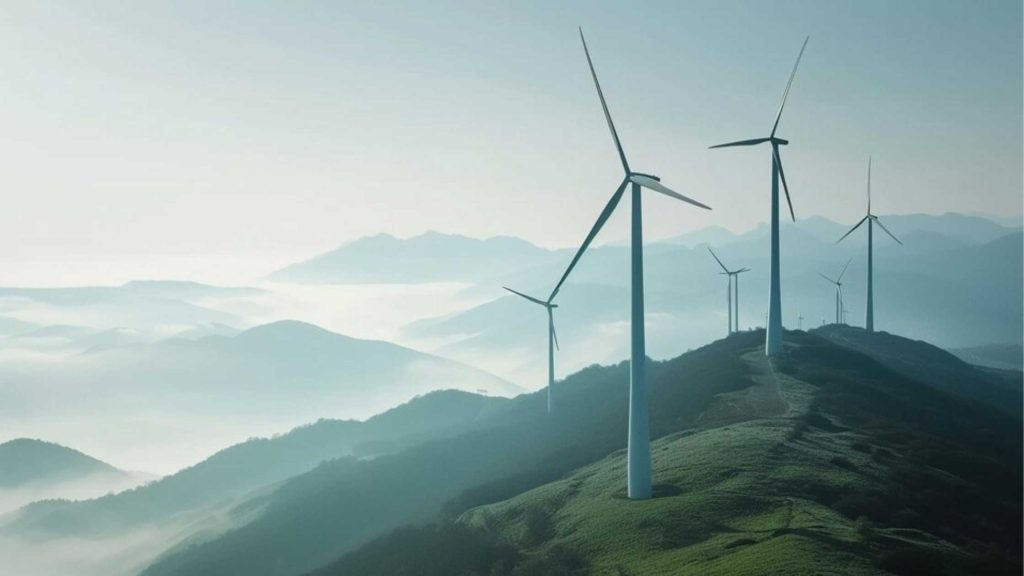The growing climate crisis implies that the world needs to transition towards cleaner and sustainable solutions, which is why marine wind power has become a significant contributor to the global energy transition. Ocean-based wind energy can have a positive impact on carbon emissions and meet a country’s electricity demand. Right now, different countries including India are working on sea-based initiatives for utilizing this renewable energy source. However, marine wind farms come with their own set of advantages and disadvantages.
This article describes offshore wind farms, the opportunities and challenges associated with large-scale coastal wind systems—especially in the Indian context—and why these projects are essential in building competitive renewables infrastructure.
What is Offshore Wind Energy?
This form of clean energy uses wind-powered turbines to generate electricity on the surface of large bodies of water such as seas and oceans. Since these power plants are placed far from populated regions, land use and noise concerns are minimized. Unlike their onshore counterparts, sea-based wind installations benefit from stronger, more consistent air currents, making them more efficient.
Opportunities in Offshore Wind Energy
-
An Abundant Energy Source That Can Be Renewed
One major benefit of oceanic wind energy is its abundance. Coastal regions receive powerful and steady winds, ideal for offshore setups. In contrast to fossil fuels, this source is renewable and supports long-term sustainability.
-
Reduction in The World Carbon Emissions
As the global community looks to reduce greenhouse gases, marine wind projects offer a viable solution. The construction of these facilities can replace fossil-fuel-based power, significantly cutting CO₂ emissions and supporting a cleaner environment.
-
More Efficient than Onshore Wind
Wind speeds over oceans tend to be stronger and more stable than those on land. This makes sea-based turbines more productive in terms of electricity generation per installed unit.
-
Economic Growth and Job Creation Possibilities.
Developing these projects opens job opportunities across various sectors like manufacturing, installation, logistics, and maintenance. Nations investing in this field, such as India, can reap both environmental and economic rewards.
-
Energy Independence and Security
Harnessing wind in offshore zones reduces reliance on imported fuels. Optimal use of this natural energy enhances national security and protects against fuel price volatility.
Advancements in Offshore Wind India
India has been actively evaluating the potential of sea-based wind projects to boost its renewable portfolio. With a 7,500+ km coastline, there’s vast potential for development. Sites have been identified, particularly in Gujarat and Tamil Nadu.
Offshore wind projects in India have received attention through some initiatives like:
- The National Offshore Wind Energy Policy (2015) outlines the framework for the development of offshore wind energy in India.
- The Ministry of New and Renewable Energy (MNRE) plans to undertake the construction of the first offshore wind farm in India.
- Partnerships with foreign bodies and private investors for the construction of infrastructure required for offshore wind energy.
Offshore Wind Farm Obstacles
Although there are many advantages to offshore wind farms, there are complex challenges that need attention to guarantee successful implementation.
-
Considerable investment is needed at the start.
Setting up an offshore wind farm Requires a lot of capital investment. For offshore wind farms, the costs incurred in manufacturing turbines, transporting them, installing, and maintaining them are much higher compared to onshore wind turbines. Financing poses a major challenge, especially in developing markets like offshore wind India.
-
Technical and engineering issues.
There are some challenges posed by the severe marine environments while Building and maintaining offshore wind farms. With the added complexity of offshore wind energy projects, turbine and corrosion seawater with extreme weather makes it highly difficult to access the turbines for maintenance, as well as add issues.
-
Energy Storage and Grid Integration.
Incorporating offshore wind energy into a national grid has its own set of problems. Improving grid infrastructure, and energy storage solutions are vital due to the wind energy’s intermittent nature, and to guarantee a steady supply of power.
-
Around environmental issues.
Even though offshore wind energy is considered clean energy, it does have some environmental issues to deal with. Marine ecosystems and fish populations as well as bird migration patterns can be impacted by wind farm construction and operation. Needing proper mitigation strategies and environmental assessments to be put in place so as to lessen these impacts.
-
Obstacles in Policies and Regulations
Both policies and regulations can make or break the prospects of success in offshore wind projects. Several nations face issues like policy obfuscation and indecisive margin in policies even in offshore wind India which translates to delays in achieving some projects.
Upcoming Trends in Offshore Wind Energy
The advancement in technology is making potential offshore wind energy promising since it will result in cheap and efficient offshore wind farms. Research and development initiatives like floating wind turbines, better storage facilities, and improved grid connectivity will increase offshore wind energy production.
In terms of offshore wind India, the government is actively overcoming the problem by doing the following actions:
- Motivating the private sector to get involved in developing offshore wind projects.
- Put more resources into R&D for improving offshore wind technology.
- Improving the policy environment to invite more foreign direct investment in offshore wind India.
Conclusion
There are many problems existing today, but tackling them with cleaner energy resources and offshore wind energy can help to an extent. Although there are problems, the future certainly looks brighter due to technological improvements, positive policies, and greater funding. Offshore Wind India’s projects support this initiative and with sufficient reforms, can become one of the leaders in the offshore wind energy sector.
In time, the oceans will have sustainable energy resources in the form of wind farms, and as countries lean towards adopting renewable sources of energy, these resources will come in handy now and in the future.
Also read: Zero Carbon Energy Powering Sustainable


